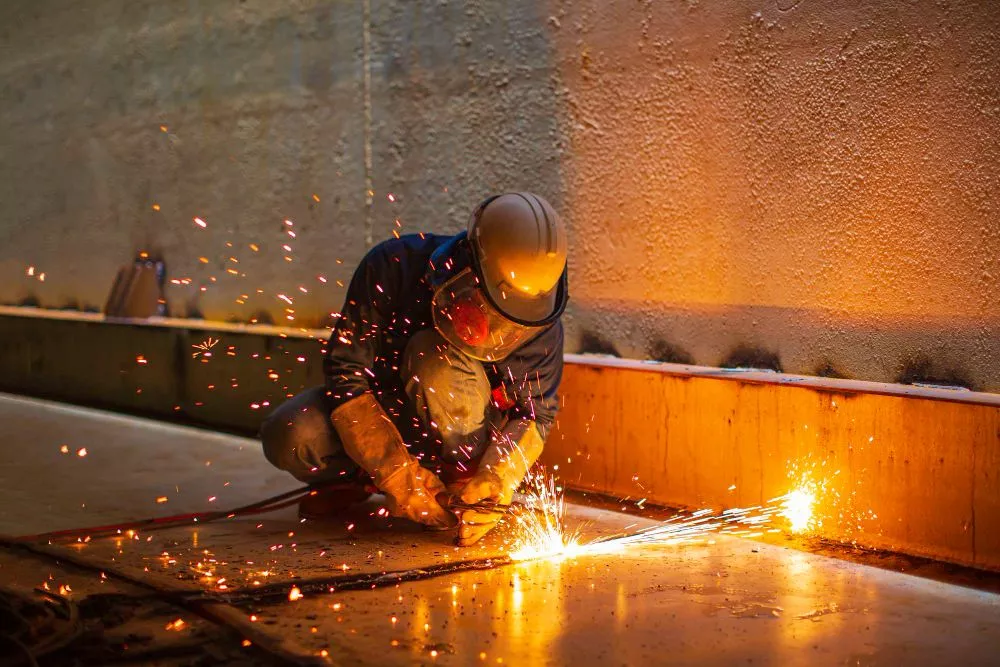Auto-darkening welding helmets have revolutionized the welding industry by providing welders with enhanced protection, visibility, and comfort during welding operations. These helmets utilize advanced technology to automatically adjust the shade of the lens in response to the intensity of the welding arc, ensuring optimal visibility while shielding the welder’s eyes from harmful radiation.
With their rapid response times and customizable settings, auto-darkening welding helmets have become indispensable tools for welders of all skill levels, improving safety, productivity, and weld quality. In this guide, we will explore the features, benefits, and considerations of auto-darkening welding helmets, as well as provide practical tips for selecting, using, and maintaining these essential pieces of welding equipment.

Understanding Auto-Darkening Technology
Auto-darkening welding helmets feature advanced technology that automatically adjusts the shade of the lens based on the brightness of the welding arc. This dynamic adjustment ensures optimal visibility for welders while providing protection from intense light and harmful radiation. The helmet’s sensors detect the arc’s brightness and trigger the lens to darken within milliseconds, shielding the welder’s eyes from the intense light emitted during welding. This instantaneous reaction eliminates the need for welders to manually raise and lower the helmet’s visor, resulting in greater efficiency and productivity during welding operations. Furthermore, auto-darkening technology reduces eye strain and fatigue by maintaining consistent visibility, even in rapidly changing lighting conditions.
Key Features and Components
Auto-darkening welding helmets comprise several essential components, including the lens, sensors, controls, and power source. The lens is the primary component responsible for darkening to protect the welder’s eyes, typically made of high-quality, impact-resistant materials with specialized coatings to filter out harmful ultraviolet and infrared radiation. Sensors strategically placed around the helmet detect the welding arc’s brightness and trigger the lens’s darkening mechanism. These sensors ensure rapid response times, enabling the helmet to darken almost instantaneously upon exposure to the welding arc. Controls allow welders to adjust settings such as sensitivity and delay to customize the helmet’s performance to their specific welding needs. Finally, the power source, usually a combination of batteries and solar cells, provides the necessary energy to operate the auto-darkening mechanism, ensuring reliable performance throughout the welding process.
Advantages Of Passive Welding Helmets
Auto-darkening welding helmets offer several advantages over traditional passive helmets. One significant advantage is their faster reaction times, which allow the lens to darken almost instantaneously upon detecting the welding arc. This rapid response ensures that the welder’s eyes are protected from the intense light emitted during welding, reducing the risk of eye injuries and fatigue. Additionally, auto-darkening helmets provide improved accuracy in shade adjustment, allowing welders to maintain optimal visibility and control over their welding process. This precision enhances weld quality and productivity by minimizing errors and rework.
Selecting the Right Helmet for Your Needs
When choosing an auto-darkening welding helmet, it’s essential to consider various factors to ensure it meets your specific welding requirements and preferences. Factors to consider include the lens size, which should provide adequate coverage and visibility without obstructing peripheral vision. Additionally, sensitivity and delay settings allow customization of the helmet’s response to different welding conditions, ensuring optimal performance in various environments. Comfort features, such as adjustable headgear and padding, contribute to a more comfortable and ergonomic fit, reducing strain during extended welding sessions. Lastly, compliance with safety standards ensures that the helmet provides reliable protection against hazardous welding conditions, giving welders peace of mind while on the job. By carefully considering these factors, welders can select the right auto-darkening welding helmet to enhance their safety, comfort, and performance.
Maintenance and Care Tips
Proper maintenance and care are essential for ensuring the longevity and effectiveness of auto-darkening welding helmets. Regular cleaning of the lens is crucial to maintain visibility and clarity during welding operations. Using a soft cloth or lens cleaning solution, gently wipe away any dirt, debris, or spatter that may accumulate on the lens surface. Additionally, inspect the helmet regularly for signs of damage or wear, such as cracks, scratches, or loose components, and replace any worn or damaged parts promptly to maintain optimal performance. It’s also important to check the battery status regularly and replace batteries as needed to ensure the helmet’s auto-darkening mechanism functions reliably. Proper storage of the helmet in a clean, dry environment when not in use can also help prevent damage and prolong its lifespan.
Training and Familiarization
Proper training and familiarization with auto-darkening welding helmets are essential for welders to maximize their effectiveness and safety. Before using the helmet in a welding environment, welders should familiarize themselves with its features, controls, and settings. This includes adjusting sensitivity and delay settings to suit their welding technique and preferences. Additionally, practicing proper positioning and technique while wearing the helmet can help welders develop confidence and proficiency in using this equipment effectively. Regular training sessions and refresher courses can also help reinforce safety protocols and best practices for using auto-darkening welding helmets, ensuring that welders are well-prepared to work safely in various welding conditions.

Safety Considerations and Best Practices
While auto-darkening welding helmets provide excellent protection against intense light and radiation, it’s essential to observe safety precautions and best practices to minimize risks further. Proper fit and adjustment of the helmet are crucial for ensuring optimal protection and comfort during welding operations. Welders should also be aware of potential hazards, such as exposure to ultraviolet and infrared radiation, and use additional protective equipment, such as welding gloves, aprons, and respiratory protection, as needed. Adhering to established welding safety protocols, such as maintaining a safe work area, ensuring adequate ventilation, and using proper welding techniques, can help reduce the risk of accidents and injuries. By prioritizing safety and following best practices, welders can enjoy the benefits of auto-darkening welding helmets while
minimizing potential risks.
Conclusion
In conclusion, auto-darkening welding helmets offer unparalleled protection, visibility, and convenience for welders, making them essential equipment in any welding operation. With their advanced technology and user-friendly features, these helmets enhance safety, productivity, and weld quality, while reducing eye strain and fatigue. By understanding the key considerations for selecting, using, and maintaining auto-darkening welding helmets, welders can maximize their effectiveness and ensure a safe and comfortable working environment. As technology continues to evolve, auto-darkening welding helmets will remain at the forefront of welding safety, providing welders with the confidence and protection they need to tackle any welding project.
Frequently Asked Questions
Auto-darkening welding helmets utilize sensors to detect the brightness of the welding arc and automatically adjust the shade of the lens to protect the welder’s eyes. This technology ensures optimal visibility and protection during welding operations, enhancing safety and productivity.
Auto-darkening welding helmets offer several advantages over traditional passive helmets, including faster reaction times, improved accuracy in shade adjustment, and greater convenience for welders. These helmets also reduce eye strain and fatigue, leading to a more comfortable and productive welding experience.
When selecting an auto-darkening welding helmet, consider factors such as lens size, sensitivity and delay settings, comfort features, and compliance with safety standards. By carefully evaluating these factors, you can choose a helmet that meets your specific welding requirements and preferences.